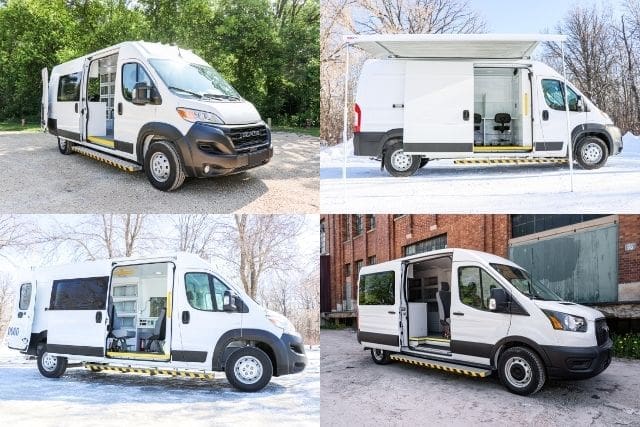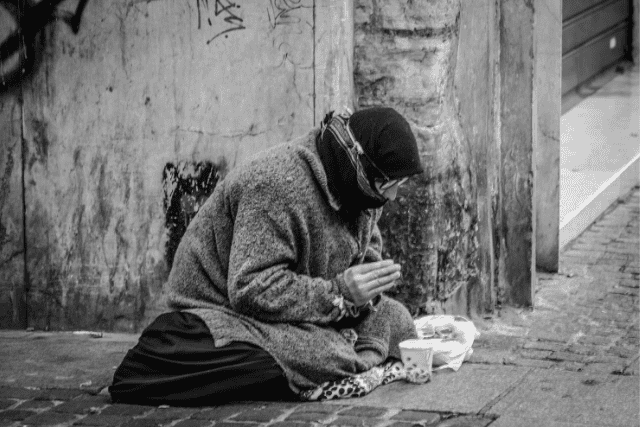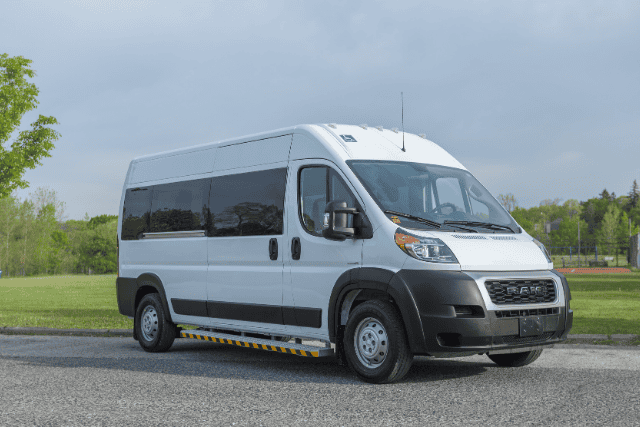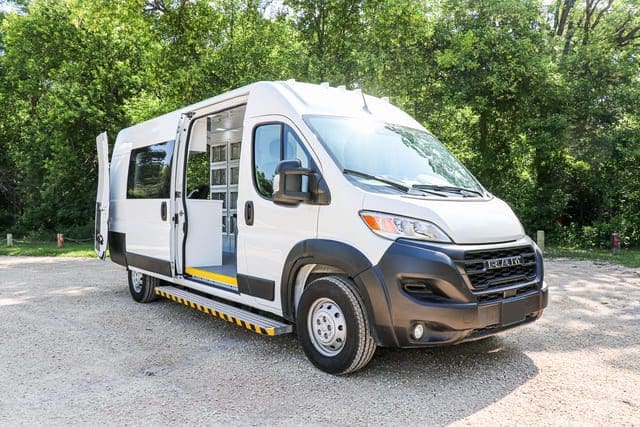Did you know: Over 187,000 people are experiencing homelessness in California on any given night? That’s one of the highest numbers in the country. These are real people—parents, kids, veterans—living without a safe place to call home.
If you’re part of an outreach organization, this might feel overwhelming. You care deeply, but it’s hard to know where to start. The risks of doing nothing are huge:
- Worse health
- Broken families
- Communities that struggle to keep up
- Death
Many homeless people lack access to resources that can help them recover, like healthcare and transportation. Without these, it’s nearly impossible for them to rebuild their lives. The question is, how can you bring those resources to them? Imagine giving people the tools they need to move forward—a chance to live with dignity and stability. That’s the future we’re working toward.
For over 10 years at AVAN Mobility, we’ve worked with groups like yours to close the gap. We’ve earned certifications from Ford QVM and Stellantis QPro, proving our vehicles meet the highest safety and quality standards. From working with small nonprofits to health organizations like CalOptima, our solutions remove barriers to healthcare and transportation.
By the end of this article, you’ll learn how your organization can take real steps to prevent homelessness in California through mobile healthcare.
Homelessness in California: Understanding the crisis
The homelessness crisis in California is unlike anywhere else in the country. The state faces challenges that touch every community, from big cities like Los Angeles to rural areas often overlooked in conversations about this issue. This represents nearly 30% of the nation’s homeless population, making the need for solutions urgent and widespread.
Who are the people affected?
Families: About 20,000 people experiencing homelessness are parents and children trying to stay together.
Veterans: Nearly 11,000 veterans are without homes, many dealing with health problems or injuries.
Youth: Over 12,000 young people under 25 are homeless. Many left unsafe homes or aged out of foster care.
Why is this happening?
High housing costs: Rent in California has gone up 35% since 2010, making it too expensive for many people to keep their homes.
Mental health challenges: Without proper care, people dealing with mental health issues or addiction often end up on the streets.
Job struggles: Losing a job or working low-wage jobs makes it hard to afford rent, especially in cities like San Francisco or San Diego.
These stats represent real people who need help now. The problem is big, but with the right tools and support, we can start making a difference.
Three solutions to ease the burden of homelessness in California
While there are many ways to help prevent homelessness in California, some solutions stand out more than others. Let’s take a look at the top three.
1. Mobile Outreach Vans: A simple way to help homelessness in California
What if you could bring help directly to people without homes? That’s exactly what a Mobile Outreach Van does. These vans are designed to take important services—like healthcare, housing help, and counseling—straight to people who need them.
For many in California, especially in cities like Los Angeles and San Diego, getting to a clinic or resource center can be impossible. A Mobile Outreach Van solves this problem by meeting people where they are: on the streets, in parks, or near shelters. These vehicles are about creating a safe, supportive space to offer services that can change lives.
Mobile Outreach Vans assist organizations like yours connect people to housing programs, provide medical care, and even offer addiction recovery support. They’re flexible, effective, and designed to make it easier to reach more people in less time. When you’re helping someone who has nowhere else to turn, this kind of solution can make all the difference.
Features of the Mobile Outreach Van
| Feature | How does it help the homeless? |
| Removeable passenger seats | Creates space to hand out supplies like blankets, food, or hygiene kits. |
| Office space with secured rolling chair | Gives people a private space to talk about housing or get counseling. |
| Aluminum floor-to-ceiling storage | Keeps things like medical supplies or personal care items organized and easy to grab. |
| Slide-to-open cabinets | Makes it simple to access tools or resources quickly during busy outreach events. |
| Conventional outlets | Powers things like laptops, medical devices, or even phone chargers for clients. |
| Grab handles | Helps people safely get in and out, especially for those with limited mobility. |
| Advanced medical equipment | Brings healthcare directly to the homeless, treating wounds or illnesses on the spot. |
| 12V plugs and USB ports | Lets clients charge their phones, which is often their only link to services. |
| Cab divider for privacy | Creates a safe, confidential area for personal conversations or medical checks. |
| Fridge for medicine/vaccine storage | Keeps vaccines or medicines ready to use, so no one has to wait for care. |
| Integrated sink and water supply | Provides clean water for basic hygiene, like washing hands or cleaning wounds. |
| Bright LED interior lighting | Makes it easy to work and helps clients feel comfortable, even at night. |
| Rear heat and air conditioning | Keeps the van comfortable, so people feel safe and welcome no matter the weather. |
| Optional lockable upper cabinets | Protects sensitive items, like medications or personal documents, from being lost. |
Let’s take a look at another solution for helping out the homeless population in California
2. Mobile Clinic Vans: Healthcare on wheels for homelessness in California
If your organization has a stronger focus on providing healthcare to people without homes in California, a Mobile Clinic Van might be the better choice. It shares many of the great features of the Mobile Outreach Van but is built for delivering medical care. Think of it as a doctor’s office on wheels.
For people living on the streets or in shelters, seeing a doctor can feel impossible. They may not have transportation, time, or money to get care. A Mobile Clinic Van brings healthcare straight to them. This means they can get help for things like injuries, illnesses, or even routine checkups without having to travel.
Cities like Los Angeles and San Diego have large homeless populations who deal with serious health problems. A Mobile Clinic Van makes it easier to reach these people, offering them the care they need to feel better and stay healthy. When you meet people where they are, you show them that their health matters.
Features of the Mobile Clinic Van
The Mobile Clinic Van has all of the features of the Mobile Outreach Van, but it has a few extras that make it stand out for healthcare.
| Feature | How does it help the homeless? |
| Firm vinyl mattress | Gives homeless patients a clean, comfortable place to rest during exams or treatments. |
| Under-bed storage | Keeps extra medical supplies organized and out of the way to save space. |
| Doctor’s office setup | Includes everything needed for checkups, wound care, or other
treatments right on-site. |
| Medical equipment | You can get extra medical equipment in a Mobile Clinic Van, including Welch Allyn tools, blood/exam equipment, and mini diagnostic equipment. |
Lastly, let’s take a look at the Mobile Counseling Van and how you can offer mental health support to homeless people in California.
3. Mobile Counseling Vans: A safe space for mental health and wellness

Helping people without homes goes beyond just medical care—it’s about addressing mental health and emotional well-being too. That’s where the Mobile Counseling Van shines. This van provides a private, welcoming space where your organization can offer counseling, mental health support, and wellness checks for the homeless.
Mental health resources are often out of reach for people living on the streets in California. Many struggle with anxiety, depression, or trauma but don’t know where to turn. The Mobile Counseling Van allows you to bring these critical services directly to them in a safe and comforting environment.
Whether you’re offering preventive counseling, connecting someone with a mental health professional, or just giving them a quiet place to talk, this van makes it easier to meet people where they are—emotionally and physically. It’s a simple yet effective way to build trust and create lasting change.
Features of the Mobile Counseling Van
| Feature | How does it help the homeless? |
| Comfortable living room furniture | Creates a cozy, calming environment, making it easier for people to open up. |
| Lockable cabinets | Keeps personal items or sensitive documents safe during counseling sessions. |
| Speakers | Allows for relaxing music or sound therapy to support mental wellness. |
| Starlink Wi-Fi | Provides internet access for telehealth appointments or connecting to resources. |
| Skylight | Adds natural light, making the space feel more open and welcoming. |
| Ramp for wheelchair access | Ensures the van is accessible to everyone, including those with mobility issues. |
Ready to help solve homelessness in California?

You likely came here because you and your organization care about helping people without homes in California. You wanted to learn what’s causing the problem and find real solutions your organization can use to make a difference.
Here’s what we talked about:
- Mobile Outreach Vans bring flexible support for housing help, harm reduction, and basic healthcare.
- Mobile Clinic Vans focus on delivering medical care to those who can’t get to a doctor
- Mobile Counseling Vans provide a private, welcoming space for mental health and wellness.
At AVAN Mobility, our Ford QVM And Stellantis Q-Pro-certified vehicles are used across the country by organizations working hard to save lives and bring hope. What makes us different? We listen. We work with you to understand your goals and challenges so we can create solutions that truly help.
You’re not alone in this fight. We’re here to support your mission to make a difference, one step at a time. If you have questions, click the button below to talk to a mobility expert.
Not ready to reach out yet? Check out more of our resources to learn how we can help.
FAQs about homelessness in California
Q: How many people are homeless in California?
A: Around 187,000 people are homeless in California, accounting for nearly 30% of the nation’s homeless population.
Q: Do homeless people get food stamps in California?
A: Yes, homeless individuals can qualify for food stamps (CalFresh.) without needing a fixed address.
Q: Is it illegal to be homeless in California?
A: No, it’s not illegal, but some cities have laws restricting camping or sleeping in public spaces.
Q: How can mobile vans help with homelessness in California?
A: Mobile vans bring critical services like healthcare, counseling, and housing support directly to people who need them.
Q: What are the main health issues faced by the homeless in California?
A: Common issues include chronic illnesses, untreated mental health conditions, and lack of access to regular medical care.




